WEEK 1
How does Sol LeWitt express the notion that “the idea is the machine that makes the art” in his work? What does the artist’s actual hand have to do with the final work in a conceptual art context?
Sol LeWitt:
“The idea is the machine that makes the art.” The planning that goes into the piece is more significant than the final work itself. Sol LeWitt creates the ideas and has others build them. “His hand” in the artwork is not really a hand at all, but more the thought process that goes into planning the artwork, or in other words, he is the “shadow hands” behind the work.. He made the idea, the plan, everything leading up to the final execution of the artwork. The concept of the work is more important than the final execution, and that is where the artist’s “hand” comes into play.
Where do you draw the boundaries around the artworks in this video? What are the artworks? What strategies and tools does Ono use to challenge the viewer? Do you like any of these concept-works? Discuss.
Yoko Ono:
Yoko Ono creates interactive artworks that create a more conceptual challenge for the viewer, rather than aiming to create a complete and cohesive piece of art. The interactiveness of her work ranges from connecting with other people or the earth, (which I really appreciate as an earth-loving hippy) HA! While I appreciate connecting to others and the world around me, this can often be something that others avoid or forget to appreciate, which is what Ono tries to challenge the participants to overcome. These pieces are subjected to a lot of interpretation as they require the viewers to participate, react, and feel a connection. I think this is an excellent example of conceptual art because it becomes very personal to the viewer, pushing people out of their comfort zones and challenges them to remember the infinite beauty we have around us, and even teaches them genuine techniques for expressing emotions healthily.
Describe two works by Bruce Nauman (include images) where he frames every day actions (non-heroic, banal) as art. How are they “framed” as art, and what does the framing do to our understanding and experience of the actions?
Bruce Nauman:
Artwork #1: Double Poke In The Eyes
I really enjoy this piece. It is just silly, fun, random and yet at the same time it is very simple. It is just a sign of two people poking each other in the eye at the same time. He “frames” this work as art by capturing a (somewhat) normal interaction between two people within a neon sign, turning a mundane action into a brightly coloured, eye-catching piece of artwork. The “framing” of this piece allows us to understand this representation of a human experience as a piece of art.
Artwork #2: Walking in an exaggerated manner around the perimeter of a square (1967-68)
I like this piece as well because it forces us to reevaluate and think about how we walk around every day, which is in all honesty, something that all able-bodied people take for granted on a daily basis. Walking is such a normal thing in our everyday lives that we do not even think about it, we just simply DO it. Nauman “frames” walking as artwork through his exaggeration. He turns it into a piece of conceptual art by making the viewer stop and think about how they walk. He changes our experience of walking by, making us feel more aware of how we look to others.
1 Kilometre Project
For the 1Km project, I decided to demonstrate a kilometre by making it out of a sign. I went out for a walk with my dog, took a picture of a ‘MAXIMUM 40km’ sign that was along the road not too far from my home. I then cut it into 40 pieces and separated one from the rest. This one piece of the sign now represents 1km, as it is 1/40th of 40km.
WEEK 2:
Marina Abramovic
One Hour Photo Assignment:
For my one-hour photo project, I sat under my kitchen island. My six-month-old puppy likes to relax and sit under the island when we are cooking, and it got me wondering if it would be a nice place to relax and maybe even meditate. I honestly thought this project would be easy. I meditate all the time when I am alone, but I did not anticipate all the distractions I would be encountering during the hour.
I was comfortable and relaxed for about five minutes before my puppy woke up from her nap and decided it was playtime. She was constantly harassing me, trying to shove her toy into my hand so I would play with her. She is teething, so at some points she even started biting my hand or my foot, which was extremely distracting and a bit painful, but I tried my best to stay still. After a while, I became slightly uncomfortable from sitting on such a hard surface for so long, but soon enough the timer went off and the hour was over. Ahhh, relief!
During the exercise, it was impossible to meditate, and it is very difficult to reflect on things when you have an animal with sharp teeth gnawing at your limbs, but one thing I was thinking about during the hour is how dedicated Marina Abramovic was to her artwork. She would sit in the same position for days or months, she would stay completely still and avoid all distractions. Her work is astonishingly impressive, but it got me wondering, how long would Abramovic last in performance if she was subjected to all the same distractions that I was? Her dedication to her artwork is incredible and I am unexplainably impressed by her and all that she does.
(Also, my pup just got surgery so the pillow around her neck is meant to be like a dog cone to prevent her from touching her stitches, but the pillow is comfier, haha)
WEEK 3:
One sentence artist instructions:
Lee Walton/Making changes: Change the position of random objects found while walking in the city, then walk away
Lee Walton/Sitting: Sit on a park bench uncomfortably close to a stranger and stay silent.
Jon Sasaki/Ladder Climb: Climb on an unsupported ladder as high as possible.
Jon Sasaki/Dead End, Eastern Market, Detroit: Drive a van into a narrow alleyway and then try to turn around
Lenka Clayton/The Distance I Can Be From My Son (Back Alley): Film your child roaming away from you until you feel you must catch up with them for their safety, then measure the distance.
Yuula Benivolski: Not available.
Defenestration Project:
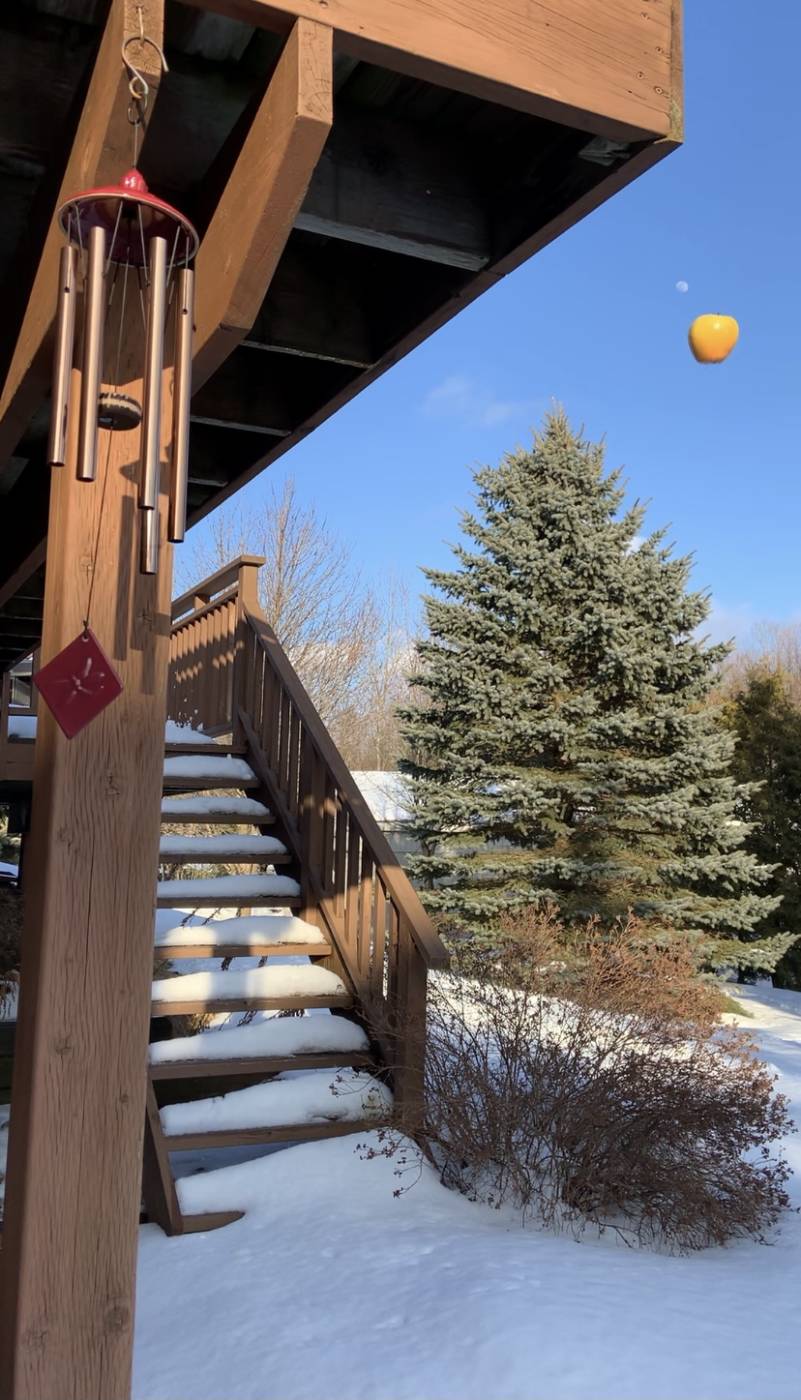

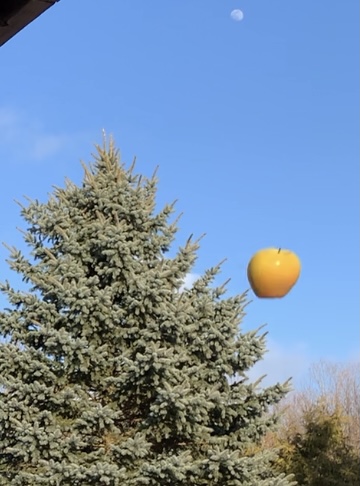


For this assignment I dropped an apple off of my deck and let it fall to the ground below, it’s a pretty far drop so I thought I could get a good picture of it mid-air. I chose a simple fruit for this assignment: apple, because I wanted to showcase something that is completely ordinary and turn it into a work of art, just as any of these artists took something so simple, often completely normal, and changed it slightly for artistic and performative purposes. Would you ever normally see an apple randomly being dropped off of a deck into the snowy ground? I never have! For this project, I tried to play with different framing techniques to create some unique photos, and I tried my best to get an excellent shot, I don’t know how well I accomplished that but I fully enjoyed this project nonetheless!
WEEK 4:
There is something about Adad Hannah’s work that almost forces you to think about your own behaviour and the behaviour of those around us as human beings. An example of this is seen through Hannah’s Social Distancing Portrait series as people of all different ages, genders, and backgrounds are observed. Every person who participated in the series is completely unique, and yet they are all experiencing the same thing collectively, the global pandemic. We get to have a closer look through the 1 minute long portraits, allowing the viewer to almost develop a relationship to the participant. We get to see the isolation they are experiencing, while also knowing personally how it feels, and this creates a connection. The quotes that go along with these video portraits help to deepen that connection and creates a deeper understanding of that personal experience during this time, whether that be surrounding physical or mental health issues, financial security, or literally any other issues that have been caused or amplified by the pandemic. This series gives us a glimpse into the reality of what has been going on for the past year and how the pandemic has affected us all.
I really enjoyed exploring the work of Adad Hannah and creating this piece with my Mom. We have spent every single day in our house for almost a year together, and while it has been difficult at times, it has been amazingly healing to have been able to have this time with her. I think it is really important to always count your lucky stars and really keep in mind the things you are grateful to have in your life, especially in times like this where the days just become boring and repetitive and blur together. So when I think of things I am grateful for having in my everyday life, my family always comes to mind, especially my mom and the connections I have to her. She is one of my greatest friends and I am so lucky to have gotten stuck with her this whole time. She loves cooking, so I wanted to capture her doing something she has done on a daily basis throughout the pandemic, just as Hannah featured within his work. One day Adad Hannah’s work will be a piece of history, and I am proud to contribute to that.
Quote by Glenna (Mom): “The pandemic is hard for all of us, I miss seeing my friends, coworkers, having a solid everyday routine, but at least during all of this mess I’ve been able to spend my time with the people I love, in a lot of ways we are more fortunate than others, and for that I am grateful.”
Week 6:
I found Steinke’s article quite interesting to read. There are quite a few points she made that I disagree with. She made a point on facial expressions and how it becomes difficult to read them while wearing a mask. This I have to disagree with. Although wearing masks makes it slightly harder to communicate and read facial expressions, I think what really carries emotions in the face is the eyes and so I have no issues reading facial expressions while others have masks on. Stienke even mentions in the article how her husband looks irritated while wearing a mask, and I think that alone suggests that expression can be noticed and understood even from just seeing someone’s eyes and/or body language. Wearing a mask does not bother me in the slightest, and I have not experienced much trouble with others recognizing me with one on, not that I’ve seen many people I know in public, as I moved to a new town at the very start of the pandemic. Stienke makes it obvious that she has a bit of a distaste for masks, but masks make me feel safe and are important to keep others safe too. She also made a point about how a woman’s face becomes less interesting as she ages. I strongly disagree with this. In a misogynistic and patriarchal society, women are taught that beauty is everything and that you should stay looking young for as long as possible, which is disgusting and wrong. I for one am excited to age and see how my face changes in the years to come. I think women grow even more gorgeous with age, as wrinkles and lines tell the story of your life, and they are just how nature works, and that is so beautiful to think about. I think to be able to grow old and gain wrinkles is a PRIVILEGE and an opportunity that some never get the chance to experience, so why not appreciate them?
Transformation 1: Slinky
During the pandemic, I finally came to terms with my sexuality and have learned to love that part of who I am. This transformation of my face represents the pride I feel when thinking of my sexuality, my true identity. I chose a rainbow slinky because it’s a rainbow that represents my sexual identity. Also, you can still see parts of my face through it, showing how this is a part of who I am and I am proud to show my true colours. (Also the photo turned out upside down, which was unintentional but I like how it turned out anyway, so I left it that way haha)
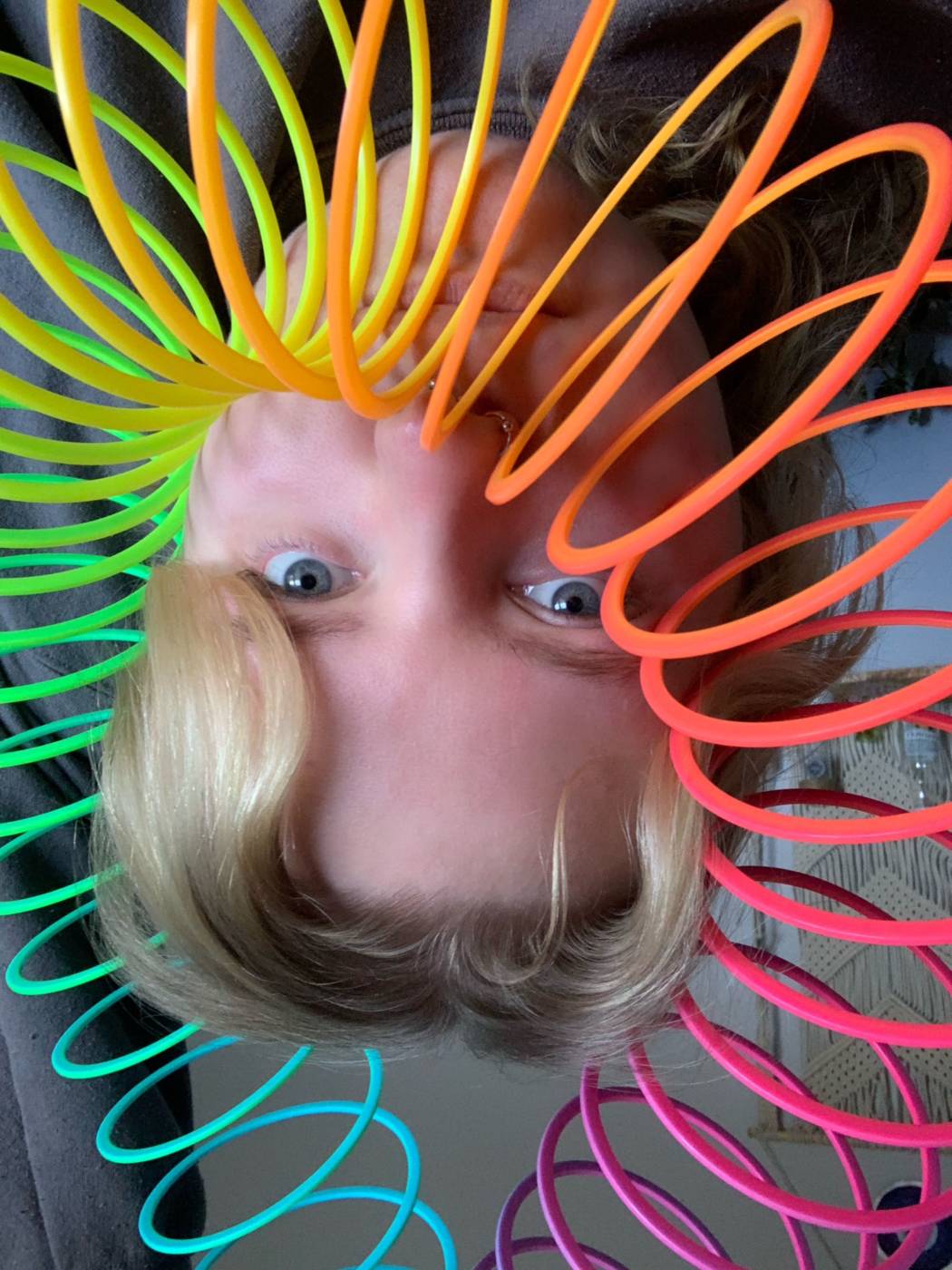
Transformation 2: Trapped in wire
Over the course of the pandemic my mental health has progressively worsened as time as gone on. Lately I have been feeling overwhelmed, stressed and anxious, with a complete lack of motivation on top of all of that, which only overwhelms me even more. I transformed my face, using wire to show the constant strain and pressure I have been feeling.
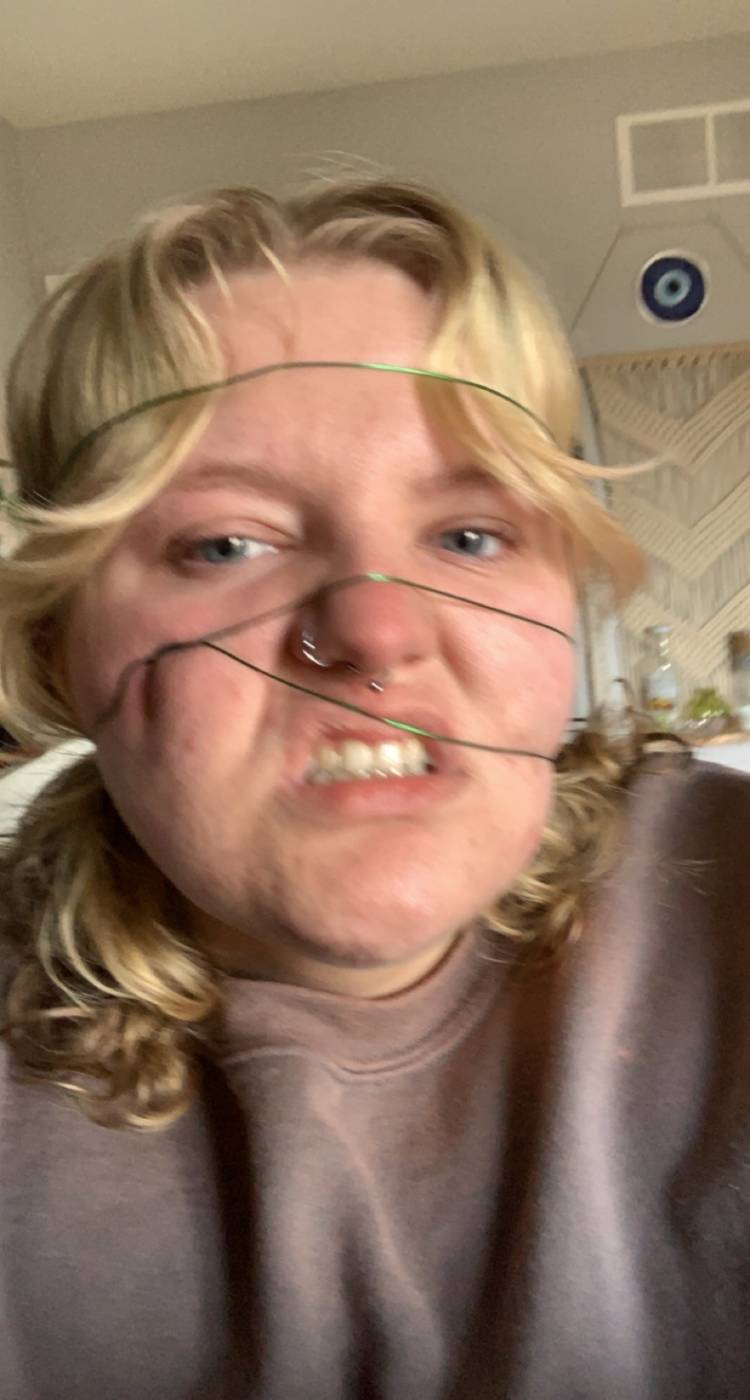
Transformation 3: What it is like to be an old woman
Stienke’s comment in her article about how women become less interesting as they age is what inspired me to make this transformation. I wanted to change my appearance to resemble an older woman’s face so I could put myself in their shoes. I used my makeup to change the appearance of my face. As women age they are told that their beauty fades, and I wanted to understand what it is like to feel societies judging gaze and the pressure older women must feel to stay young as long as possible. It was interesting to live a day looking like someone else, and I have an even deeper appreciation for women and all they have to overcome, in all different stages of life. All women are beautiful, fat, skinny, short, tall, young and old.

Week 7, 8 & 9
Kelly Mark, I Really Should:
As someone who has been struggling with motivation and to complete their to-do list lately, I personally feel very connected to this piece. I feel that I was beginning to think that Kelly was being too hard on herself by making such a long to-do list to complete, when I realized that is exactly what I do every single day. She had impossible standards for herself to achieve which would only set her up for failure, and I always do the same, which probably contributes to why I always feel inadequate in what I have accomplished each day. Although her list makes me feel anxious in a similar way to how my to-do lists do, it is also comforting to know that I am not the only one who over plans and then totally neglects all that I have to do everyday.
Janet Cardiff, The Forty Part Motet:
For this piece Janet Cardiff had 40 speakers arranged in a circle, ready to perform “Spem in Alium” from the 16th Century, a polyphonic piece that includes soprano, alto, tenor, baritone, and bass voices, originally composed by Thomas Tallis. She changed this song by highlighting each singer individually in a complex recording process. This musical “scultpure” is very interesting because the sound changes spending on where you stand making it just like an actual sculpture as the perspective of the artwork changes depending on where you are experiencing it from. There are so many layers to this art piece as each voice is different and that is what makes it so interesting for me and it seems like an amazing experience.
John Cage, 4’33” (For Orchestra and Soloist):
John Cage composed a silent orchestra. the composer and musicians act as though the stage is engulfed in sound. Everything you can see makes you believe there is noise to be heard, but it is completely silent. The only sound you can hear is the sound of the music sheet turning over, breathing and gentle movements. This is a very interesting art piece in my opinion because the visual representation and the audio representation of this performance do not align with one another.
Proposal: For my audio piece I decided to read out my goals as I was inspired by Kelly Mark’s I really should. This semester I have struggled a lot with staying on top of things and my mental health hasn’t made that any easier either, so I want to try to make a list of things I want to accomplish before the next semester rolls around so I can grow as a person and better myself.
Week 10:
Notes on art pieces that I found interesting:
John Baldessari, I will not make any more boring art, 1971 – Baldessari writes out the words “I will not make any more boring art” and writes it many more times. I’m not sure if this work in itself is boring but it is up to the viewer to decide for themselves what is boring and what isn’t. I personally think this is interesting because he is taking a simple sentence, something that some could find extremely boring and giving meaning to it. I also do this kind of thing as a form of manifesting what I want in life, I write down what I want repeatedly, which seems boring but sometimes it can actually be effective. I wonder if this was a way for Baldessari to manifest that his artwork will no longer be boring.
All the Dead Stars, 2009 – A map documenting the locations of just under 27,000 dead stars – all that humankind has recorded and observed overtime. It is essentially a recording of our existence through dead stars which is so cool.
The Mythic Being, 1973 – artist transformed into a “man” by wearing an afro, mustache and sunglasses and used a masculine personality and experienced life in the city, documenting people’s reactions to this “mythic being”. I like this art piece as someone who is non-binary because it shows that we can be whoever we want and experience life in whatever ways we want to, even if that means dressing up to look like what society thinks a man should like. I also find this interesting because she gets to experience the world as a man.
Proposal: For my conceptual portrait I would like to make a series of words that are documented and repeated, as I was inspired by John Baldessari, I will not make any more boring art, 1971. When seeing and reading about his art piece I instantly thought of a scripting manifestation technique I have heard of. You write out something you want, in present tense over and over again until you convince yourself that you already have what you are asking for. (If you would like to learn more about this and how it works, you should look it up, I am doing a poor job of explaining it.) I would like to write out the sentence “I have found true happiness within myself”. Lately, I haven’t been feeling myself entirely and I would like that to change, so I thought I would take the opportunity to try to manifest that reality for myself. In many ways this is a portrait because it is a reflection of what I would like to find within myself. I am manifesting a brighter, happier alternative of myself; a version or “portrait” of myself that I have yet to find in the person I am now, but would like to become.

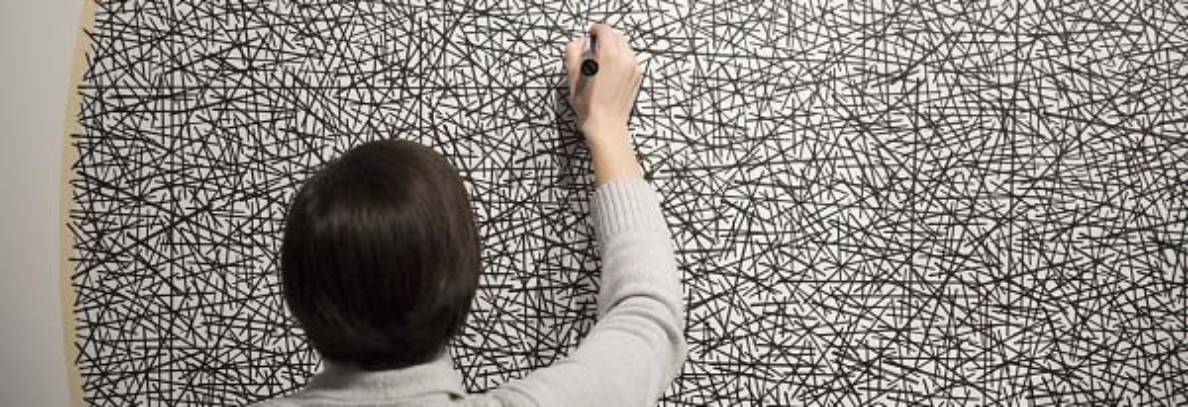
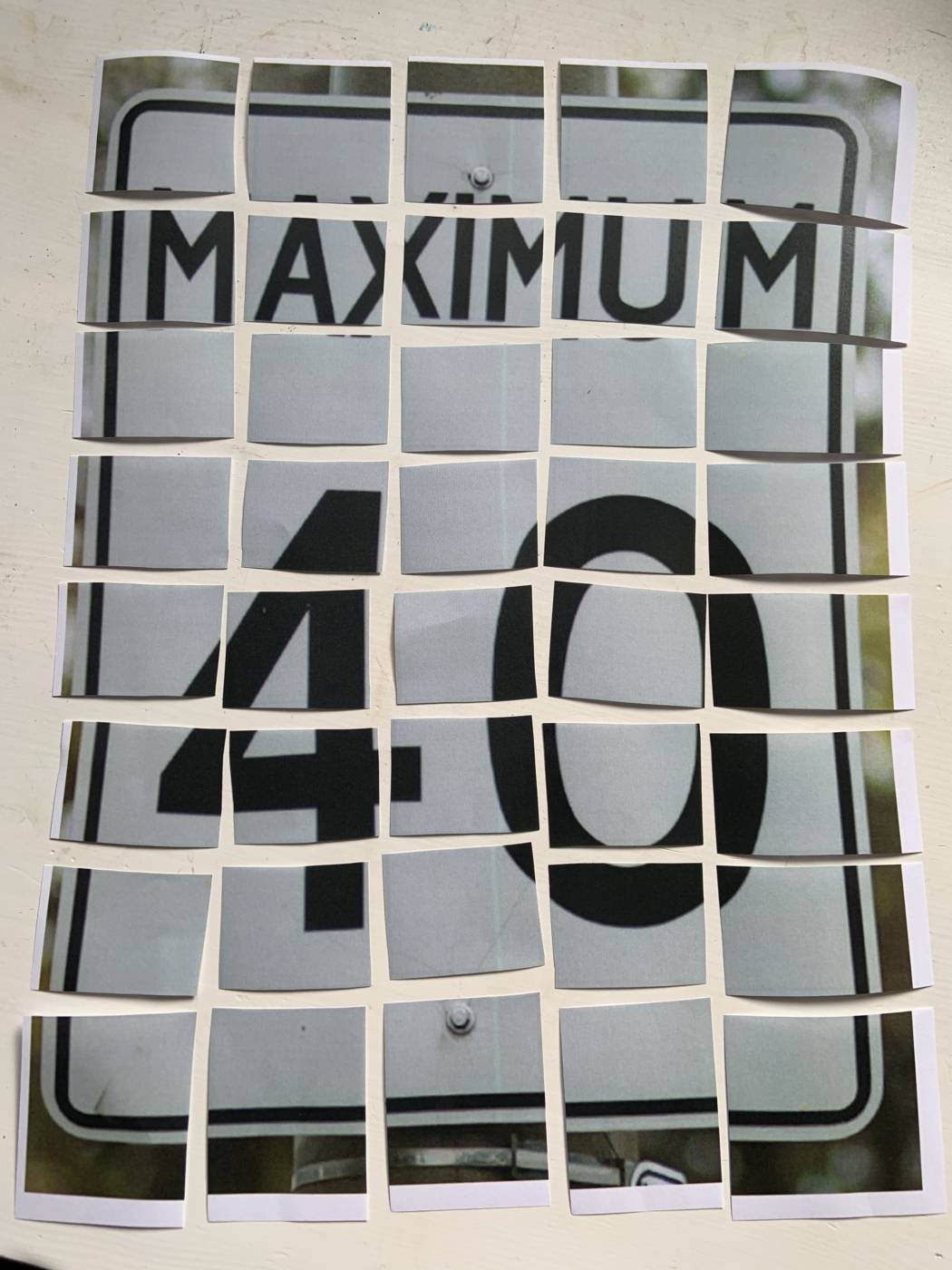
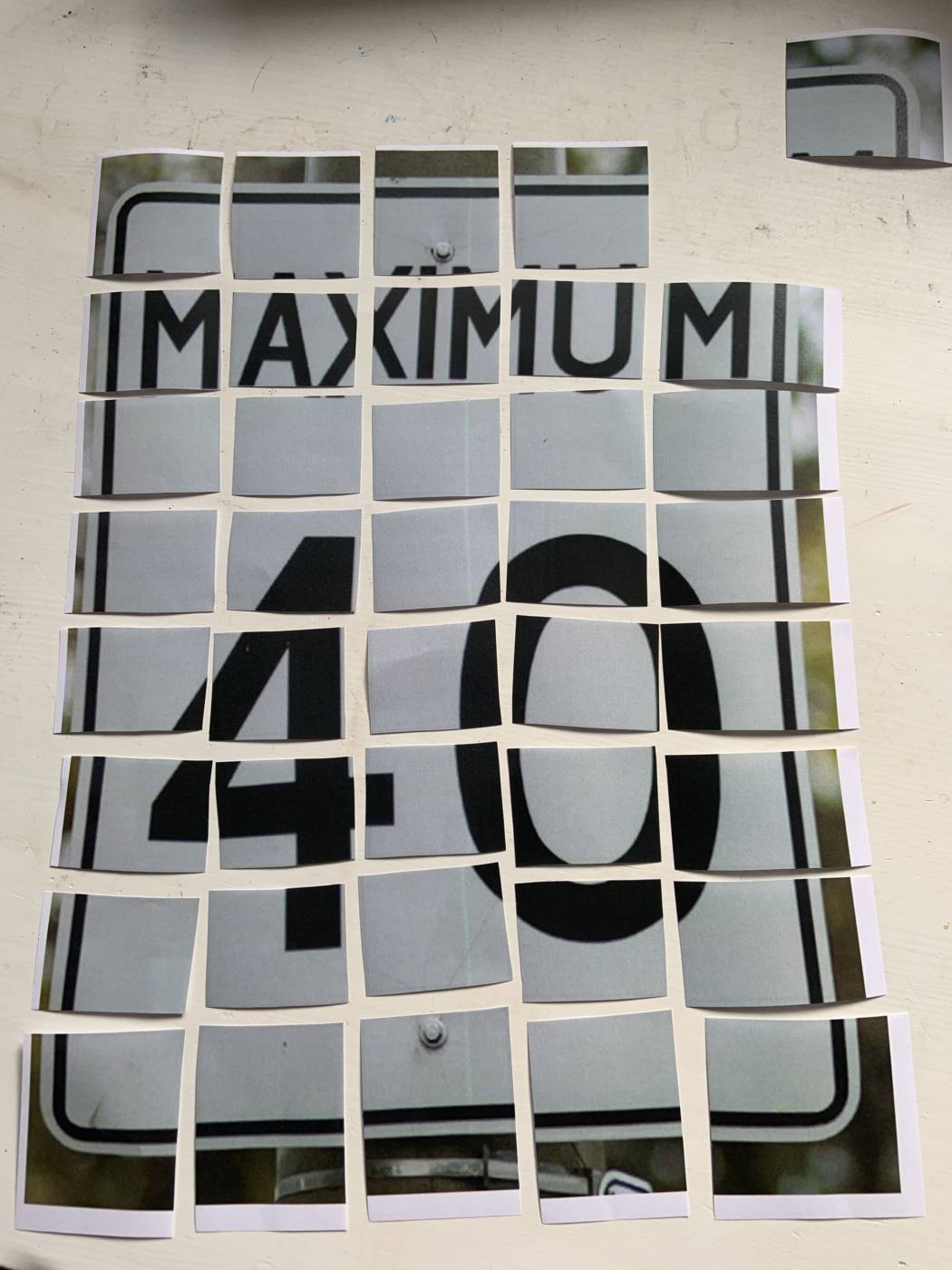
Hi Kaitlyn,
Some work is missing – please complete weeks 3 and 4, and I’ll check back later this week for grading –
Diane
Hi Diane, I am still trying to upload some work now! I am speaking to Nathan about how to upload my work! I am so sorry for the delay. Thank you for understanding 🙂
Kaitlyn
Hi Kaitlyn,
W1: Notes on Sol Lewitt, Yoko Ono, Nauman good, showing a good sense of the conceptual ideas at play, Kilometre image and description – really clever! I like how you divided the sign, and then could show us just 1/40th of it as a KM. Great conceptual/imaginative thinking.
W2: Image of Abramovic/Stillness gesture, and description – good to see you make yourself uncomfortable, and to find a new perspective in your home.
W3: 6 conceptual sentences all great, Defenestration image and description – a bit unadventurous but the general idea is good – try lots of perspectives to get an image with a more intentional composition, without so many background distractions, maybe some new feelings/surprise.
W4: 1 Distancing video portrait, and description is good – an indoor portrait of our time. I heard the term lately “distractabaking” and I’m doing it too!
Overall, very good evidence of curiosity and engagement with material, and good level of understanding of critical ideas at play. Keep improving technical investment and effort,
and keep seeing how far you might go with experimentation (not knowing what might happen) and adventurousness – for example taking some ambitious risks, extending things out beyond familiar zones, increasing scale etc..
Thank you for the attendance and engagement in class, and if you would like to talk with me about your work in progress, readings, exercises, one-on-one comments on your work, and grades – send me an email in the morning to book a 15 minute appointment during the optional contact hours: Thursdays 11:30-2:30.
And you can show up to a zoom meeting with Nathan anytime during these hours to ask your questions, and get tech support for using software and finishing your projects:
Mondays and Thursdays